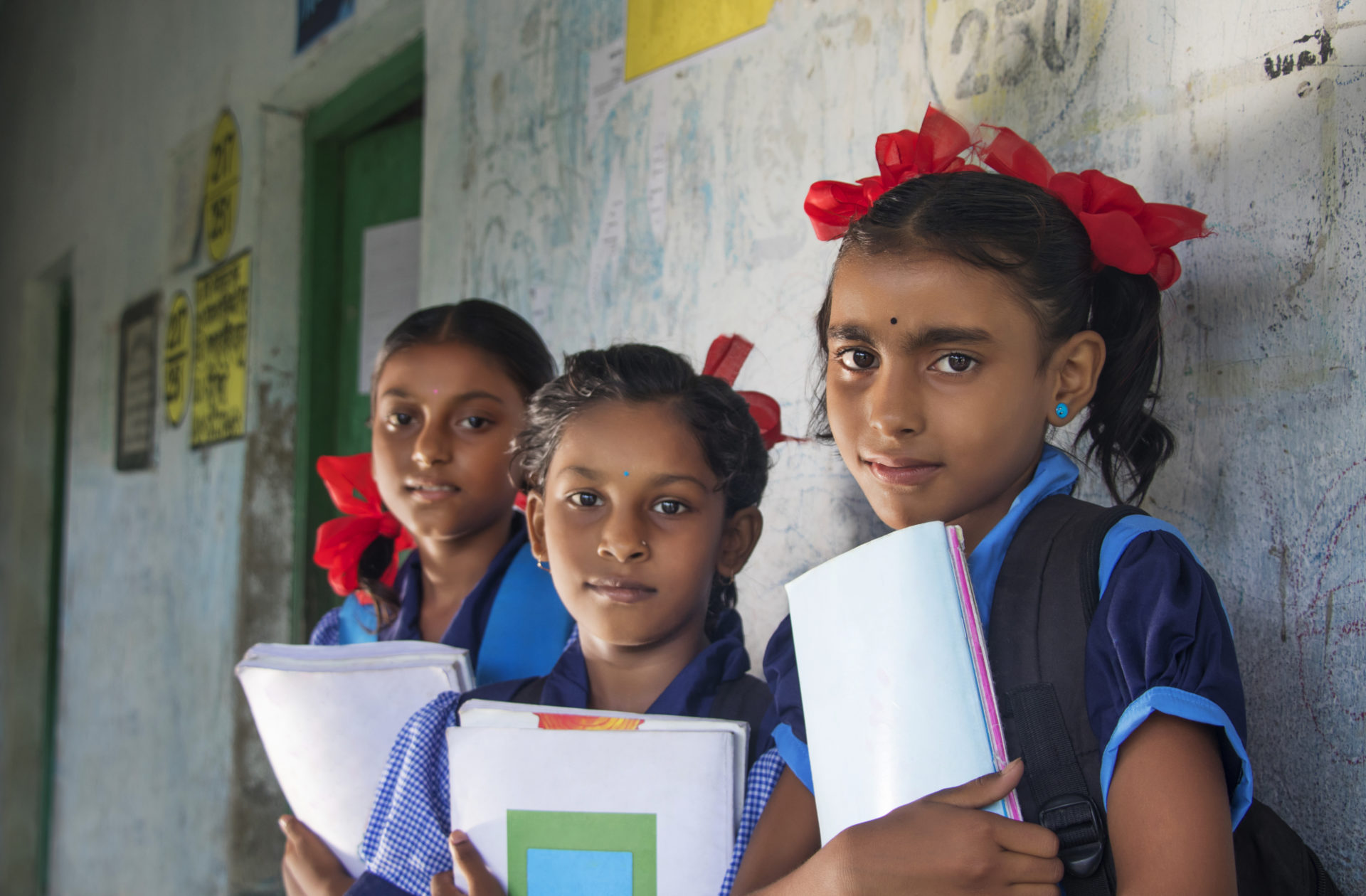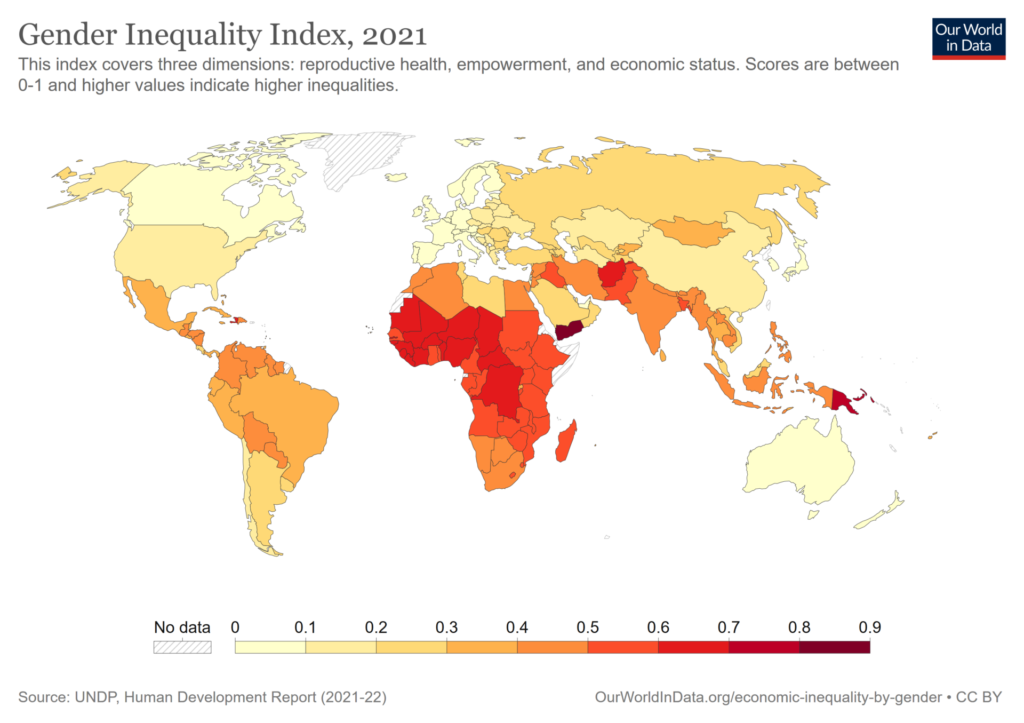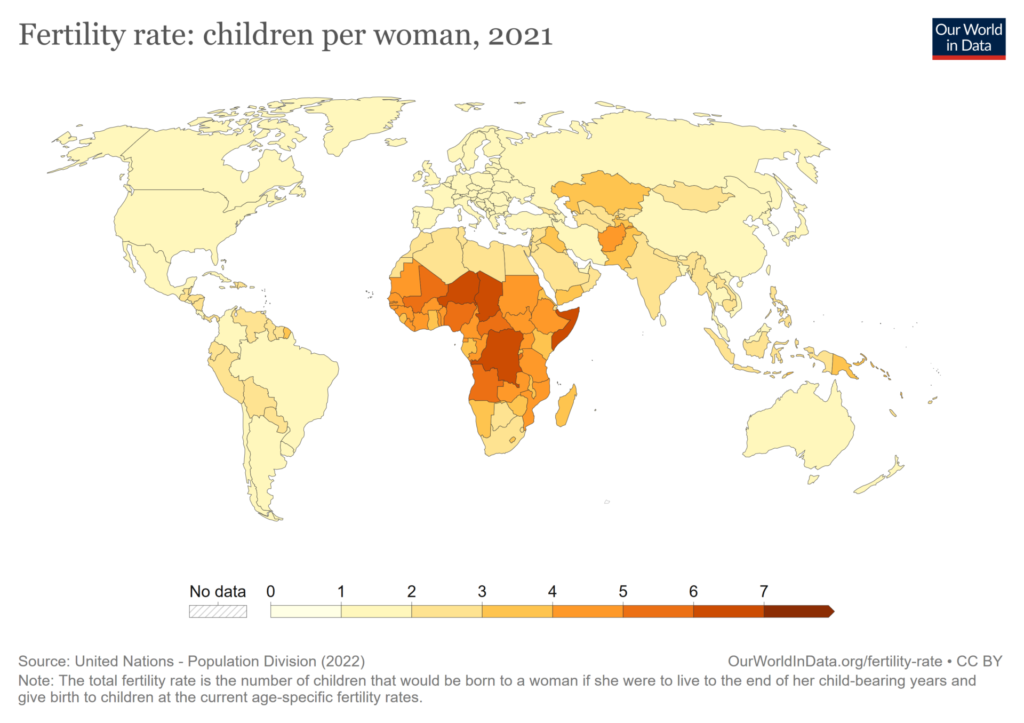
Female students standing outside of classroom in rural India
Adobe Photos
Choice matters
Empowering women and girls is one of the most effective sustainable development levers, yet women’s rights sadly remain severely underfunded.
Not a single country has yet achieved full gender equality, and women’s rights, freedoms, and opportunities vary widely across the world. According to the UN, almost half of partnered women in low- and mid-income countries still have no decision-making power over their own bodies, meaning they do not get to make their own choices about health care, contraceptive use, and whether to have sex. Additionally, gender-based violence still affects one-in-three women globally, and 257 million women (218 million of whom are in developing countries) who wish to avoid pregnancy are not using modern contraception. As a result, half of all pregnancies worldwide—or 121 million per year—are unintended.
The areas with the fastest population growth also have some of the worst gender equality scores. When women are free to choose what happens to their bodies and lives, average family size plummets, as is evident in all countries with below-replacement fertility rates.


Robbed of a childhood
Girls who grow up in households in poor settings, alongside large numbers of siblings, often face barriers to enrolling in school or completing their educations—they are frequently needed at home to help care for younger siblings, and their parents often can’t afford school fees for all of their children. When parents can only afford to send some of their children to school, they typically send the boys.
Additionally, when couples have many children, they often submit their daughters to early marriage in order to reduce their burden of support, and in some cultures, to receive a much-needed dowry payment. Child marriage typically leads to early and frequent childbearing and a life of unpaid subsistence work and child rearing. And that’s only if girls survive young motherhood. Sadly, the leading cause of death worldwide for girls 15-19 is complications from pregnancy and childbirth, and adolescent girls are also disproportionately affected by HIV/AIDS.
By contrast, when girls receive an education, they tend to marry later, have more opportunities for paid employment, have better health outcomes, and have fewer children over the course of their lives. This virtuous circle continues when their own children are able to stay in school, marry later, participate in the formal employment sector, and plan the number and timing of their pregnancies and births.
Every single year, 12 million girls are married before they reach 18. According to UNICEF, regional levels of child marriage are as follows:
- West and Central Africa: 37%
- Eastern and Southern Africa: 31%
- South Asia: 28%
- Latin America and Caribbean: 22%
- Middle East and North Africa: 15%
Keeping girls in school and postponing marriage and childbearing are key to empowering women with the skills and confidence to pursue careers and to exercise control over other major life decisions.
Unmatched benefits
Empowering women and girls is morally essential and makes entire communities and countries more prosperous, sustainable, and resilient. Aside from slowing population growth, when women have bodily autonomy, they are better able to maintain their health, raise healthy children with good prospects, and make key contributions to society. Enabling women to enter the workforce boosts economic growth and research shows that more women in decision-making positions leads to more policies aimed at protecting the environment and improving health and education.
Unfortunately, there is still a big mismatch between the funding that is needed to end the worst gender inequalities—including child marriage, gender-based violence, the unmet need for family planning, and preventable maternal mortality—and what has been made available. In light of the lack of progress on the Sustainable Development Goals and in several cases, major setbacks, there is an urgent need to close the gender equality funding gap.
Relevant SDG Targets
End all forms of discrimination against all women and girls everywhere
Eliminate all forms of violence against all women and girls in the public and private spheres, including trafficking and sexual and other types of exploitation
Eliminate all harmful practices, such as child, early, and forced marriage and female genital mutilation
Recognize and value unpaid care and domestic work through the provision of public services, infrastructure, and social protection policies and the promotion of shared responsibility within the household and the family as nationally appropriate
Ensure women’s full and effective participation and equal opportunities for leadership at all levels of decision-making in political, economic, and public life
Ensure universal access to sexual and reproductive health and reproductive rights as agreed in accordance with the Programme of Action of the International Conference on Population and Development and the Beijing Platform for Action and the outcome documents of their review conferences
Undertake reforms to give women equal rights to economic resources, as well as access to ownership and control over land and other forms of property, financial services, inheritance, and natural resources, in accordance with national laws
Enhance the use of enabling technology, in particular information and communications technology, to promote the empowerment of women
Adopt and strengthen sound policies and enforceable legislation for the promotion of gender equality and the empowerment of all women and girls at all levels
By 2030, eliminate gender disparities in education and ensure equal access to all levels of education and vocational training for the vulnerable, including persons with disabilities, Indigenous peoples, and children in vulnerable situations
By 2030, ensure universal access to sexual and reproductive health-care services, including for family planning, information, and education, and the integration of reproductive health into national strategies and programs
